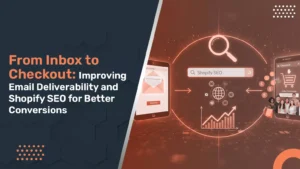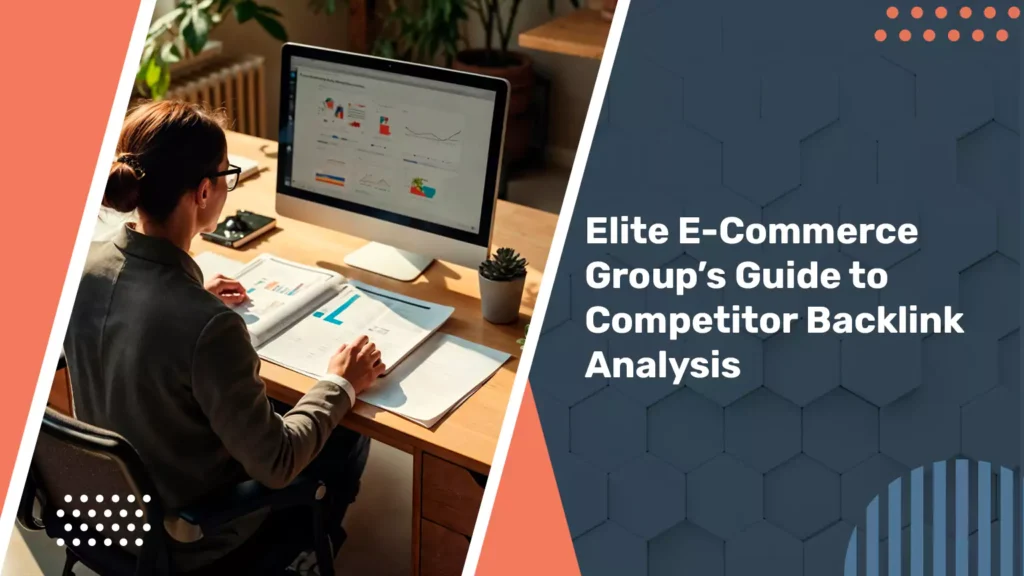In the rapidly changing e-commerce space, having a solid online presence is not just about having an attractive website. A solid and competitive SEO foundation is key to long-term success. One of the best ways to fine-tune your e-commerce SEO services is through competitor backlink analysis.
In this blog, we will explain how to analyze competitor backlinks, why it is imperative for your growth, and how it fits into the larger picture of e-commerce website development, Shopify SEO, and conversion optimization.
What Is Competitor Backlink Analysis?
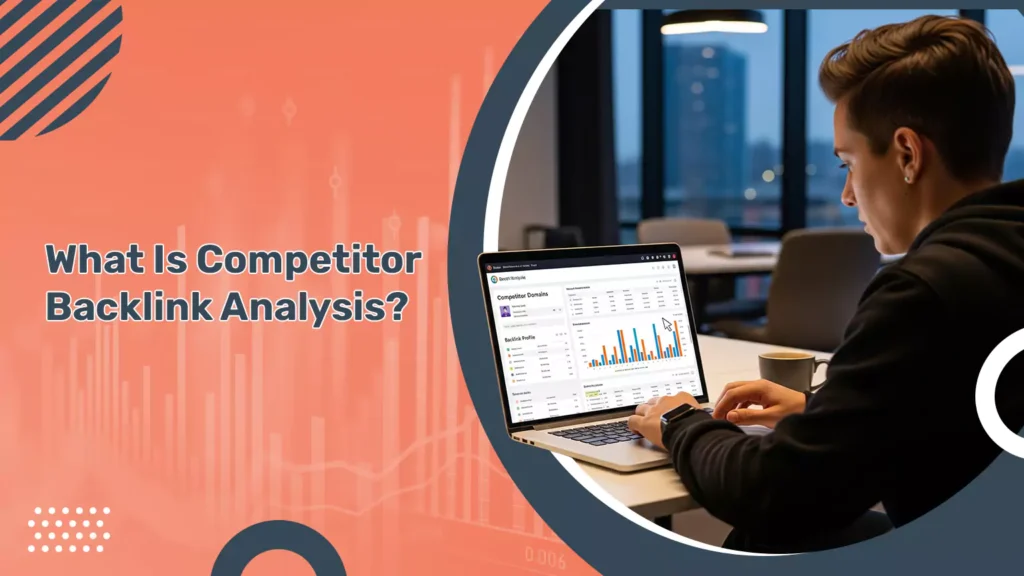
Analyzing your competitors’ backlinks requires researching the backlink profiles of peer e-commerce websites. Backlinks are just links from other websites to your own. Search engines use backlinks as trust signals to analyze the relevancy, authority, and trust of a website.
Identifying where other e-commerce sites are getting their backlinks opens the door to better improving your e-commerce marketing strategy, especially if you are using a hosted e-commerce platform, like Shopify or WooCommerce.

Why Competitor Backlink Analysis Is Crucial for E-commerce SEO
If you’re starting a new Shopify store or optimizing an existing store, looking at your competitors’ backlinks can help you:
Keyword Ranking: Sites with strong backlink profiles outrank sites with poor backlink profiles.
Traffic Generation: Quality backlinks can send relevant referral traffic to your store.
•Finding Opportunities: Find out where your competitors are gaining visibility so you can do it better or duplicate what they are doing.
Tools for Backlink Analysis
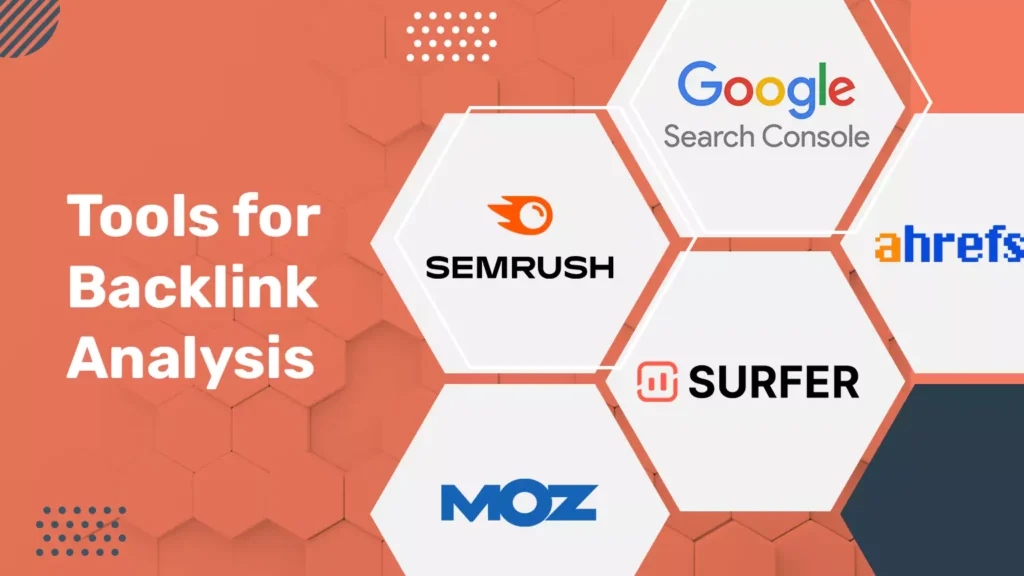
To conduct a comprehensive analysis, here are some top tools:
- Ahrefs: Excellent for backlink reports and identifying referring domains.
- SEMrush: Offers insights into backlink gaps and provides a backlink audit.
- Moz Link Explorer: Ideal for tracking Domain Authority (DA) and Spam Score.
- Surfer SEO: Combines content analysis with backlink insights.
- Google Search Console: Use it to evaluate your own backlink health.
Steps to Conduct a Competitor Backlink Analysis
1. Determine Your Main Competitors
Review your e-commerce niche and create a shortlist of 3-5 companies that rank for your target keywords. Those are your SEO competitors.
2. Export Their Backlinks
Use whatever tool you see fit to extract their backlinks list, referring domains, anchor texts, and the page with that link.
3. Quality of Backlinks
You want to make sure you know the:
• Domain Authority of the referring sites
• Relevance of the referring page to your niche or category
• Variety in anchor text used, and if they look natural
Being aware of the most valuable backlinks helps know how to replicate those ethically.
4. Spot the Gaps
Tools like SEMrush’s Link Gap tool show where your competitors are linked and you are not. These gaps highlight high-potential link sources for your e-commerce website development plan.
5. Track Link Growth
Monitor backlink velocity over time. A spike in competitor backlinks may signal a campaign, press coverage, or product launch worth analysing.

Leveraging Insights for E-commerce Growth

Following your investigation, it is important to decide. The next step is to take the knowledge you have just learned an act.
•Enhance Shopify Store Design: create content like product briefs, blogs, or case studies that will build editorial links.
•Increase Shopify SEO: focus on the content that has received backlinks in the past in the niche.
•Optimize conversion rates: Now you can shift some of your link-building campaigns to existing products or landing pages with high conversion rates.
•Refine your e-commerce marketing efforts: join outreach or digital PR campaigns to acquire backlinks long-term.
Replicating Competitor Backlinks: The Right Way
There are ethical ways you can duplicate competitors’ backlinks by:
•Creating superior content to theirs and pitching it to the same sites
•Guest posting on relevant industry blogs and linking back to your site
•Using DP to generate brand mentions and authoritative links
Avoiding Toxic Backlinks
Toxic backlinks harm your SEO. During your analysis, flag links from low-authority, irrelevant, or spammy domains. Use Google’s Disavow Tool to keep your site healthy.

Key Metrics to Track
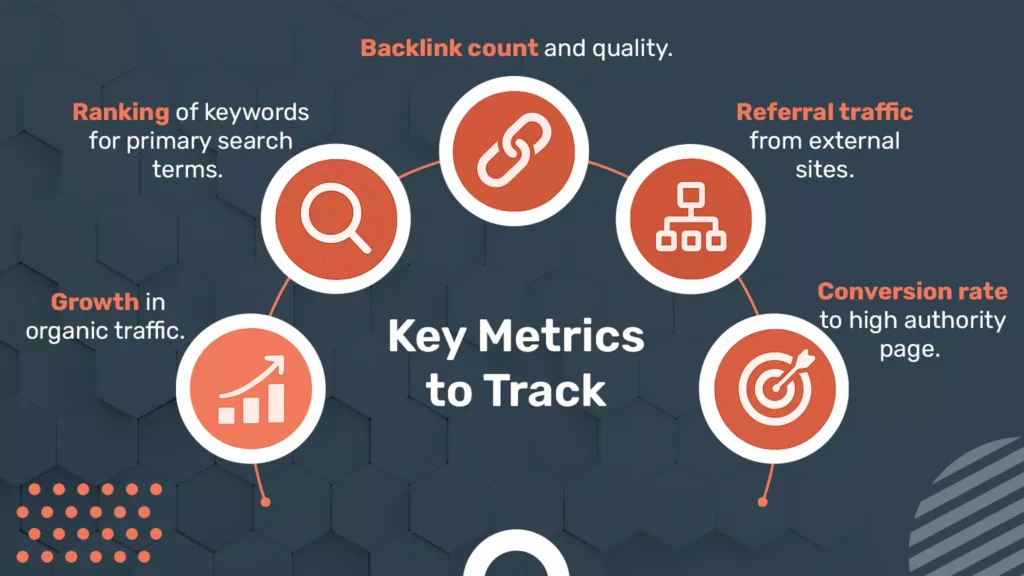
•Growth in organic traffic.
•Ranking of keywords for primary search terms.
•Backlink count and quality.
•Referral traffic from external sites.
•Conversion rate to high authority page.
Regularly auditing any of these should ensure your e-commerce SEO strategy keeps in line with your aspirational goals.
Final Thoughts
Competitor backlink analysis is more than a technical task; it is an invaluable strategic weapon in your e-commerce growth strategy, regardless of if you are evaluating the best e-commerce platform, learning to manage your Shopify store, or optimizing for conversions, and backlinks are the bedrock of search visibility.
For you to have a clear picture of long-term organic success, you need to spend time analyzing your competitors’ backlinks.
Elite E-Commerce Group: Your Shopify & SEO Experts

At Elite E-Commerce Group, we offer end-to-end Shopify expert services, including:
- Tailored Shopify store design
- Strategic Shopify SEO
- Full Shopify store management
- Advanced e-commerce conversion optimisation
- Implementation of powerful Shopify marketing tools
Let us help you build a scalable, optimized, and profitable e-commerce business.
Contact us today to elevate your backlink strategy and drive sustainable growth for your online store.


